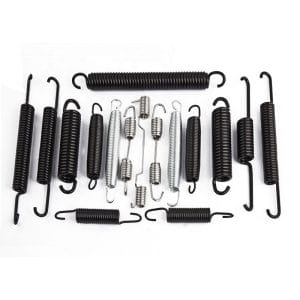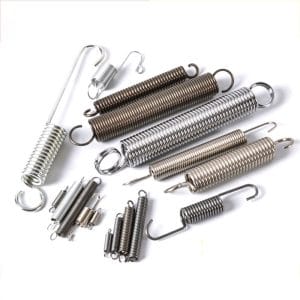What is Springing Machining used for?
Machining is essential for the production of just about anything. From simple assemblies to intricate parts, machining is a vital process that helps companies achieve their goals. In this blog post, we will explore some of the most popular applications for springing machining and what they can do for your business.
What is Springing Machining?
In industrial manufacturing, the term ‘springing machining’ refers to the use of high-speed cutting tools that allow for sudden changes in direction. Springs act as amplifiers to transmit force more quickly and thus produce a greater degree of accuracy and control. This type of machining is used for many production processes including:
-Drilling
-Forming
-Milling
Types of Springing Machining
The use of springing machining is a process that uses precision cutting tools to perform various tasks. The most common application for this type of machining is in the manufacturing of parts that need to be accurately fit together. This is due to the fact that the tools used in this process are able to move quickly and precisely, allowing for accurate and consistent mating between the parts being machined.
Another common use for springing machining is in the production of components that are sensitive to vibrations or movement. By using precision cutting tools, it is possible to create parts that are less likely to be affected by these movements. Additionally, this type of machining can also be used to create components with precise dimensions and shapes.
Applications of Springing Machining

When you need to quickly produce a part with precision, spring machining is the perfect solution. The key advantage of this type of machining is that it can be very fast and easy, making it ideal for tasks like prototype creation or short runs.
What are the different types of springs?
There are actually many different types of springs, but the most common are coil springs and leaf springs. Coil springs are made up of many coils that are tightly wrapped around each other. When you press on one end of the coil, it causes the entire spring to compress. Leaf springs are similar to coil springs, but they have multiple thin layers instead of a single thick coil. This makes them more flexible and able to absorb more force before breaking.
Where do I start using Springing Machining?
If you’re not sure what type of spring you need, your first step is to consult an expert. Once you’ve determined which kind you need, you can start shopping for materials. Springs generally come in two types: metal and plastic. Metal springs are usually stronger and will hold their tension better than plastic ones, but they tend to be more expensive. Plastic springs are cheaper and weaker, but they’re often easier to work with because they deform less when compressed.
How do I set up Springing Machining?
Before starting any machining task, make sure that your machine is properly configured and calibrated. Most machines have specific automatic settings that you can
What is a Springing Machining?
Springing machining is used to create parts with better shape, on-shape accuracy, and less material removal. In simple terms, it is a type of machining that uses the elasticity of a material to help guide the cutting tool. Springing helps create a more accurate part by using the natural forces of deformation in the material to help guide the tool.
How to choose the right Springing Machining for your needs
Choosing the right springing machining for your needs can be a daunting task. There are so many different types of machining available and each has its own unique set of benefits and drawbacks. Before you can choose the right type of springing machining, you need to decide what you need it for. Here are some tips on how to choose the right type of springing machining for your project.
If you’re only considering standard turning and milling operations, then a turning center or small-to-medium-size lathe may be enough. These machines are relatively inexpensive, efficient, and have minimal setup time. If you plan on doing more complex work such as threading, profiling, or cutting with multiple tools at once, then a larger lathe is likely required. Larger lathes also tend to be more expensive but offer a wider range of capabilities and are usually easier to operate than turners.
If you’re not sure whether or not a larger lathe is necessary yet don’t want to commit to one, consider using a CNC router instead. CNC routers can do most basic Turning & Milling operations just as well as larger machines but typically have less setup time and cost less in the long run. They’re also great for complex cutting and routing tasks where accuracy is key. However, they can be more complex to use than turners or lathes so if that’s not your thing go ahead and get a smaller machine!
Conclusion
Springing machining is a process where an insert, or part that is to be milled, is placed into the machine and the inserts are clamped in place. The outside of the insert then starts milling away while the inside of the insert remains stationary. This produces two parts with one edge being smooth and the other being rough due to the different depths of cut.



